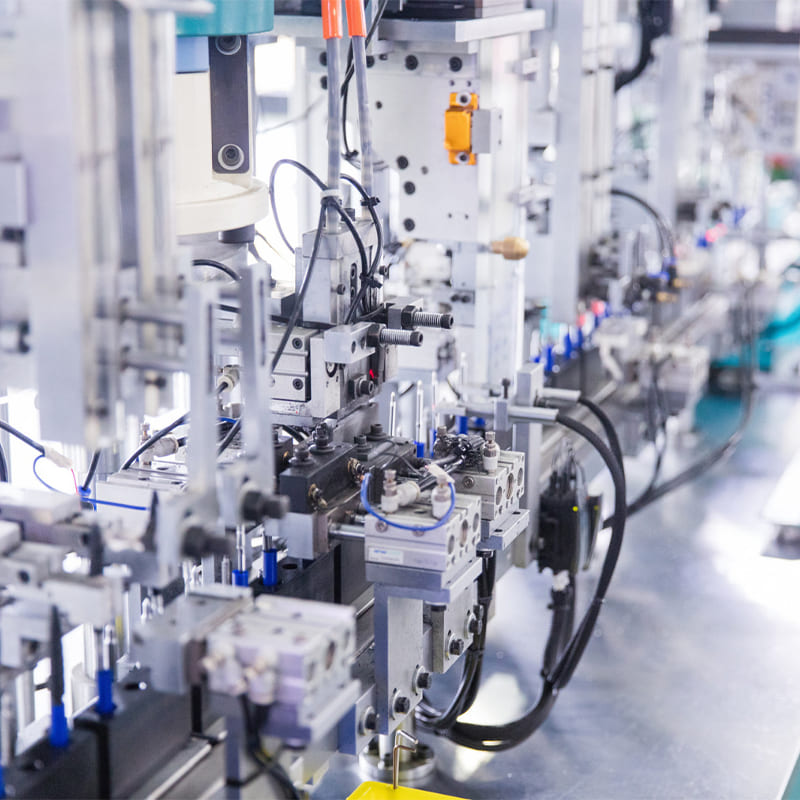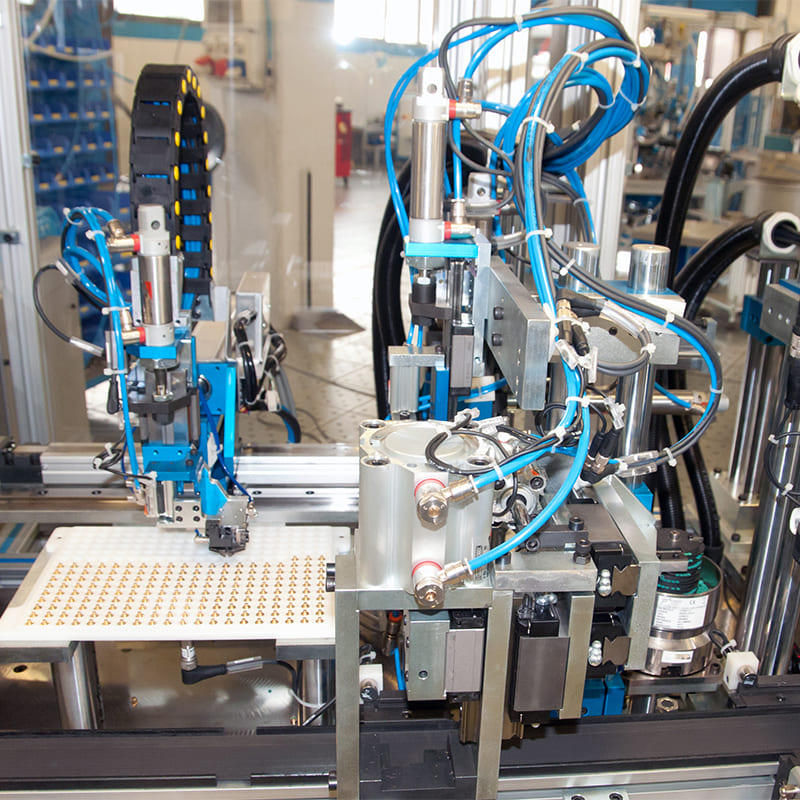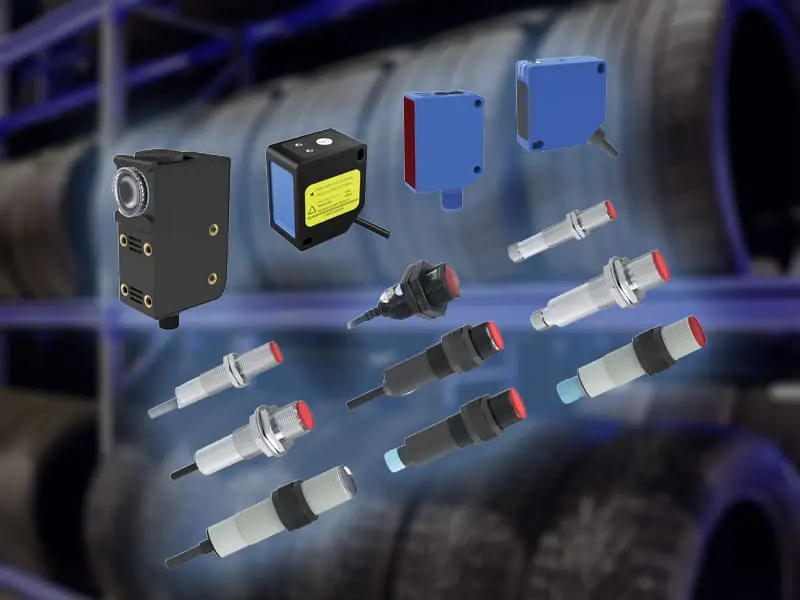Best Use Cases for Inductive Proximity Sensors in Industrial Applications

Inductive proximity sensors play a pivotal role in industrial automation, particularly in environments where detecting the presence or position of metal objects is crucial. These sensors operate based on the principle of electromagnetic induction, enabling them to detect metal objects with high precision while being unaffected by non-metallic materials. Typically, their detection range spans from 0.5mm to 20mm, making them versatile for a variety of industrial settings. Additionally, inductive sensors are designed to withstand harsh environments, including extreme temperatures and vibration, making them highly reliable in demanding conditions.
Metalworking and Manufacturing
One of the most common applications of inductive proximity sensors is in the metalworking and manufacturing industries. In environments where precision is key, such as on lathes or milling machines, inductive sensors are used to ensure that metal workpieces are correctly positioned before machining. These sensors can detect even small metal objects, with a minimum diameter of 1mm, ensuring precise machining processes and improving overall product quality.
The response time of inductive sensors is another critical advantage. In high-speed production lines, such as those in metal fabrication plants, the sensors’ typical response time of less than 1 millisecond ensures seamless operation without slowing down production. For example, in the automotive industry, inductive sensors can perform up to 1000 detections per second, ensuring bolts and metal parts are fastened securely and accurately during the assembly process. This high-speed detection directly contributes to increased productivity and safety, reducing the risk of operational failures.
Packaging and Sorting
In packaging and sorting industries, inductive proximity sensors are frequently employed to detect the integrity of metal cans or containers on production lines. These sensors are particularly useful in high-speed environments, where accurate detection can significantly increase sorting efficiency and reduce product defects. For instance, when sorting metal packaging, the high accuracy of inductive sensors ensures that only correctly sealed and undamaged containers pass through to the next stage of production.
Moreover, in food and beverage packaging lines, inductive proximity sensors play a crucial role in quality assurance. These sensors often come with protection ratings such as IP67, which make them resistant to water, dust, and chemicals—conditions frequently encountered in food production environments. Their ability to withstand exposure to cleaning agents ensures that sensors continue to operate reliably over extended periods, contributing to product safety and compliance with hygiene standards.

Automotive Industry
The automotive industry relies heavily on inductive proximity sensors for various safety-critical applications. On assembly lines, these sensors are used to check the proper alignment and fastening of metal components, such as bolts, nuts, and brackets. The high detection speed of these sensors, combined with their ability to operate in extreme conditions, ensures the integrity of each assembly.
In applications such as brake systems and engine assembly, where precision and reliability are essential, inductive proximity sensors monitor the correct placement of metal parts. They provide real-time feedback to automated systems, allowing immediate correction if any component is misaligned. This reduces assembly errors and improves overall vehicle safety.
Elevators and Hoisting Machinery
Safety is paramount in industries involving elevators and hoisting machinery. Inductive proximity sensors are deployed to monitor door positions and ensure proper closure before operations commence. These sensors can endure extreme temperatures and vibrations, typical of heavy-duty machinery, and still deliver accurate readings.
For example, in hoisting applications, the sensors detect the position of metal components like gears or levers, ensuring that operations occur within safe parameters. The sensors’ robust build and ability to function in harsh conditions make them ideal for ensuring both operational efficiency and worker safety in such environments.

Robotics and Automation
Robotics is another area where inductive proximity sensors have found widespread use. In automated systems, especially those interacting with metal components, these sensors help in controlling precise movements and ensuring that the robot operates within specified tolerances. The sensors’ rapid response and high sensitivity are crucial for tasks that require quick, repetitive motions, such as welding or assembly of metal parts.
In robotics, the accuracy of inductive proximity sensors improves overall system performance, allowing robots to handle even the smallest metal objects with precision. Their integration into robotic systems helps optimize production processes by reducing errors and increasing operational efficiency.
Performance in Harsh Environments
One of the key advantages of inductive proximity sensors is their durability and ability to perform reliably in harsh industrial environments. Whether exposed to high levels of dust, moisture, or extreme temperatures, these sensors continue to function accurately. Many models are rated IP67 or higher, which means they can withstand being submerged in water or exposed to contaminants without degrading in performance.
For instance, in industries such as metal refining or mining, where conditions are harsh, the sensors’ rugged construction allows them to detect the presence of metal objects with the same level of precision as in controlled environments. This makes inductive proximity sensors indispensable in such applications, where downtime can be costly and safety is critical.
Inductive proximity sensors have become an integral part of industrial automation due to their high precision, speed, and robustness. They are particularly well-suited for applications where detecting metal objects is critical, and they excel in environments with extreme conditions such as high temperatures, vibration, and contamination. When selecting the right inductive sensor for a specific application, factors such as detection range, response time, and environmental conditions must be considered to ensure optimal performance and reliability.
As industries continue to evolve towards greater automation, the demand for reliable sensors will only increase. Inductive proximity sensors, with their proven track record of durability and accuracy, are well-positioned to meet the challenges of modern industrial applications.
Unlock Precision with Bedook Sensors!
Explore our extensive range of sensor products designed to meet your diverse needs. Whether you require customized solutions or technical expertise, our team is here to support you. Send us an inquiry for pricing and let’s discuss the best solutions for your industry!
Explore Bedook: Your Trusted Sensor Manufacturer
At Bedook, we specialize in designing, developing, and manufacturing a comprehensive range of proximity sensors and switches. Our extensive product lineup includes:
- Inductive Proximity Sensors
- Capacitive Proximity Sensors
- Photoelectric Sensors
- Ultrasonic Sensors
- Solid State Relays
- Various Accessories
With over 10,000 detailed product variations and a robust R&D team, we take pride in our ability to meet your unique requirements with tailored solutions and reliable performance.
Whether you’re seeking off-the-shelf products or customized designs, Bedook offers the expertise and production capacity to ensure your satisfaction.
Get in Touch Today!
We value your interest in our products and warmly encourage you to send us an inquiry. Let us help you find the perfect sensor solution for your application.
Thank you for considering Bedook—your trusted partner in innovation and quality manufacturing. We look forward to collaborating with you!






